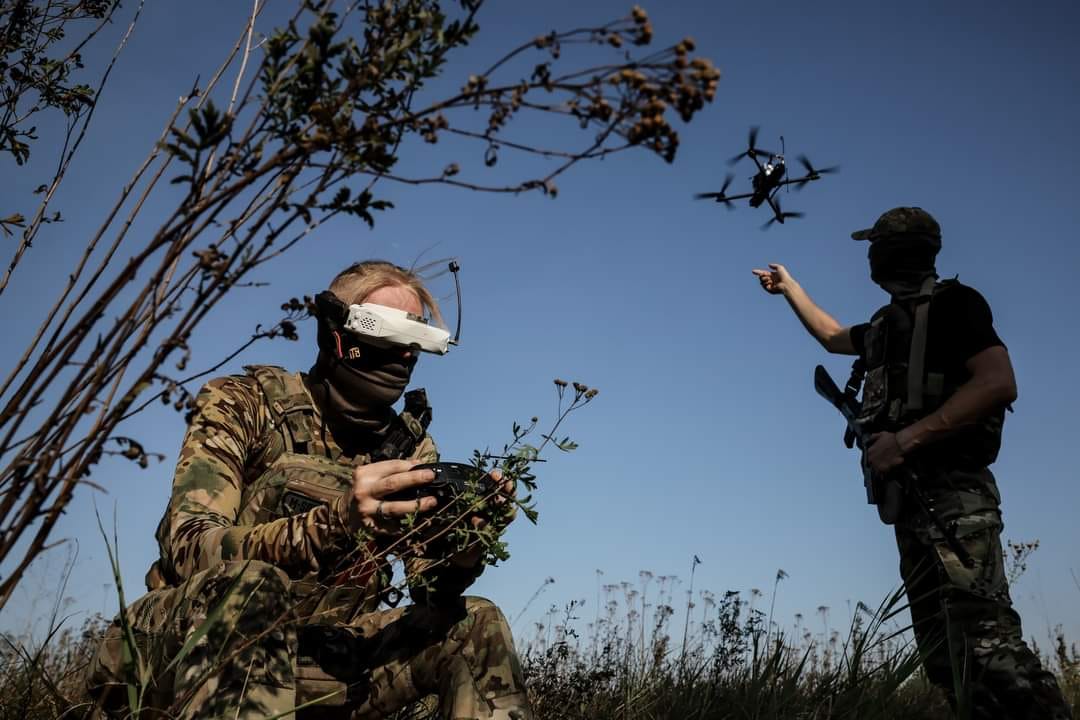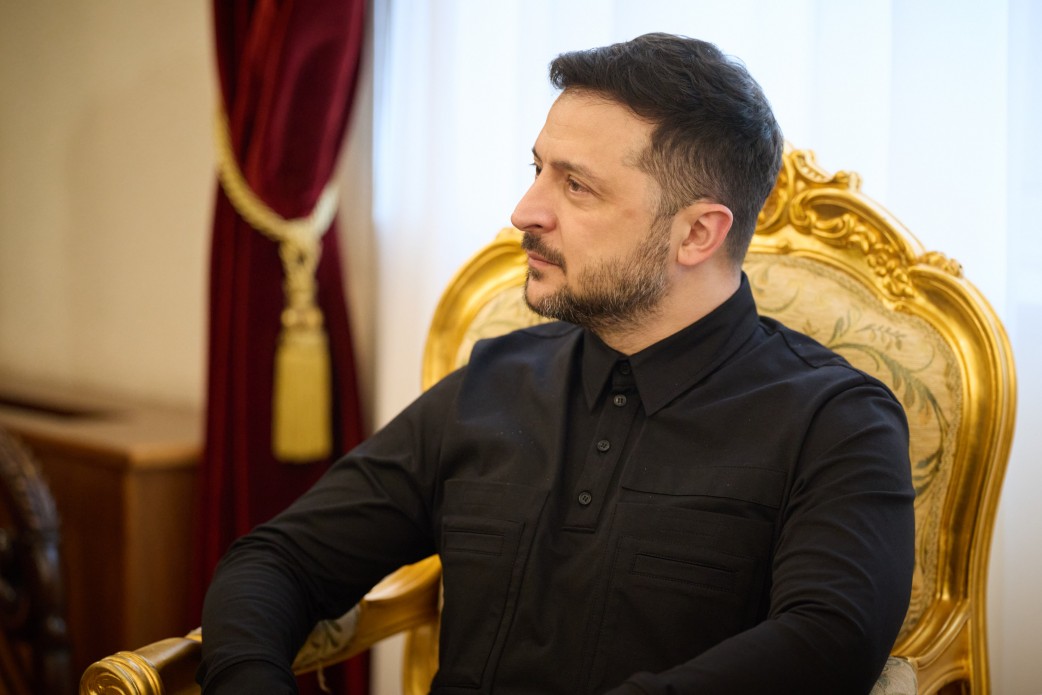The command of the enemy's "Center" group continues to make significant efforts to execute its plan of pushing the Ukrainian forces out of their bridgehead east of the Volchya River, from the area of Galitsynivka to the region north of Krasnohorivka.
According to this plan, in the past few days, the enemy's forward units from the 90th Tank Division (TD), and apparently the 9th Separate Motorized Rifle Brigade (SMRB) reallocated to this direction, have persistently attacked and stormed the Ukrainian positions in the direction of Memryk - Lesivka, as well as Kalynove - Galitsynivka, trying to outflank (cut off) our units defending in the area of Karlivka.
As a result, it seems that the Ukrainian forward units were forced to withdraw from Karlivka and leave the area east of it. Additionally, the enemy has apparently managed to capture at least the northern part of Galitsynivka (which, in turn, prompted the Ukrainians to withdraw from Karlivka).
At the same time, to the north, towards the city of Selydove, the enemy has so far failed to push the Ukrainian forward units out of the area of Marinka, despite its persistent attacks by the 27th Motorized Rifle Division (MSD) and the 114th SMRB from the north, from the side of Novohrodivka, as well as from the side of Mykhailivka (likely attacked by units of the 228th Motorized Rifle Regiment/MSP of the 90th TD). The Ukrainian hold on Marinka is beginning to significantly hinder the enemy's ability to attack directly towards Selydove and to expand its penetration in the Novohrodivka area further south in the Pokrovske direction.
It is evident that the enemy will soon be forced to further narrow the front of its offensive, choosing one of two options: either an offensive towards Selydove or continuing the encircling movement of its forward units relative to the Ukrainian bridgehead on the Volchya River, located east of it from Galitsynivka to the northern edge of Krasnohorivka.
Moreover, it seems that, as previously noted in past reviews, we should expect "activation" of the forward units of the 110th OMSB of the 1st Army Corps (AK) of the Southern Military District in the Krasnohorivka area soon. Most likely, its units will attempt to cross the Lozova River northwest towards the villages of Zhelanne (First and Second).
Also, it is possible that the 5th OMSB of the enemy, as part of the "overall plan," will make a focused attempt to further "advance the southern flank" by breaking through from Krasnohorivka westward towards Aleksandropol and Kurakhove. This would be quite logical.
Thus, at present, we have a clear attempt by the Russian command of two military groups ("Center" and "South") to implement a plan on their common adjacent flank to push Ukrainian forces west of the Volchya River under the threat of encirclement east of the line.
What does this have to do with the Pokrovske direction? Directly related.
I have previously noted that as long as the Ukrainian forces are "conditionally speaking" east of the line Ukrainisk - Ostre, and also control the area of Selydove, the continuation of the Russian offensive directly towards Pokrovsk will pose certain risks for the Russian troops.
Currently, it is evident that the Russian command, recognizing the tactical "peculiarities" of the situation in this direction, is striving to eliminate all possible flank risks from the south for its grouping (2nd Combined Arms Army), which is specifically targeting Pokrovsk.
In this context, the following should be noted.
It is evident that the enemy can NO LONGER advance with more or less high tempos simultaneously both in the Pokrovske direction and towards Selydove while still pushing Ukrainian forces south of the general direction "towards Pokrovsk."
In recent days (during the period of increased enemy activity towards Selydove and in the direction of Halytsynivka), their advancement in the Pokrovske direction has been limited to expanding the "zone of control" in Novohrodivka by a few hundred meters and advancing from Vesele to Hrodovka by 250 meters.
Despite this, the enemy continually attempts to attack with the 27th Motorized Rifle Division, the 15th and 30th Separate Motorized Rifle Brigades, and part of the 114th Separate Motorized Rifle Brigade in the following directions:
- Sviridivka – Novotoretske;
- southeastern part of Hrodovka (from Vesele);
- Zhuravka - Krasny Yar;
- Novohrodivka - Sukhy Yar;
- and from Novohrodivka directly west towards the E-50 road.
Currently, I have no information indicating that the forward units of the enemy's 2nd Combined Arms Army have managed to break through the barrier line near Zhuravka and Kazenyi Torets, except perhaps in the area of the Novohrodivka-1/3 mine near the Pokrovsk - Avdiivka railway.
It is evident that the Ukrainian command is trying to take advantage of the "chance" I mentioned earlier in my reviews, to "slow down" the enemy's advance directly in the Pokrovske direction (it would be "somewhat strange" if they weren't doing so) by this natural barrier.
It should be emphasized that time is clearly not "on the side of the Russians." The longer they remain occupied with securing the flanks of their Pokrovske grouping, including their efforts to "quickly capture" Selydove, the greater this "chance" for the Ukrainian forces becomes.
However, right now, they cannot simply disregard the flanks and rush headlong into an assault on Pokrovsk. Without securing the flanks, it would be a pure gamble.
Thus, it is evident that this "dilemma" appeared before the Russian command in full force a couple of weeks ago, and they decided to act "by the book":
- first secure the "threatening" flank
- and then switch focus back to Pokrovsk.
As I understand it, the Russians' calculation is based on the assumption that nothing significant in terms of defense will be prepared by the Ukrainian forces directly in the Pokrovske direction while they "resolve the Selydove and flank issues."
To ensure this, they are trying to continue intensive attacks in the Pokrovske direction with the same composition of forces and means previously deployed here, to simply prevent the Ukrainians from consolidating on the aforementioned natural barrier... while sending (reassigning) additional forces and resources (reserve) from the Central Grouping of Forces to address the "flank issues."
A perfectly understandable and logical decision.
The problem is "only" that even if the enemy manages to push our forces out of the bridgehead on the Volchya River and somehow penetrate into Selydove, they will still require ADDITIONAL forces and resources for the "assault on Pokrovsk."
And not just in small quantities.
Here, we return to the same "general" (strategic) situation (and also to the question of whether the Ukrainian offensive in the Kursk region was necessary or not), particularly in the key area—the presence or absence of STRATEGIC RESERVES on the enemy's side. Also, to their REAL CONDITION, in terms of their combat and operational capabilities.
If the Russian General Staff "envisioned" for the summer-autumn of 2024, under this term, primarily the forces of the Northern Group of Forces (i.e., the troops of the Leningrad Military District), then I have bad news for the Kremlin.
And many signs suggest that this is indeed the case.
In other words, there are no other strategic reserves beyond the Leningrad Military District forces (one combined arms army + three army corps) that are apparent at the moment. Otherwise, the Kharkiv adventure with the "sanitary zone" as it stands now would simply not have occurred.
For a better understanding of what I mean, I recommend that Russian generals and colonels reread the memoirs of General Guderian, preferably in their complete version (not the "abridged" Soviet propaganda version), particularly the parts relating to the period of the Wehrmacht Army Group Center's advance on Moscow.
The basic principles of "conducting troops," both then and now, with adjustments for modern technological changes, are very similar in their "effective" parts.
Once again:
Dear Russian "strategists," when your political leadership (which believes itself to understand the strategy of warfare) sets you a clearly erroneous (and unlikely to succeed) strategic task without taking into account a whole array of significant strategic factors, it would not hurt you to ask your leadership a series of pertinent questions. Among which the most important should be: "Are you out of your mind?"
Fortunately, you cannot ask these questions...




















